“Physical disability should never become a handicap” – that has been always the aim of healthcare providers. This has been attempted in many ways, since time immemorial with the attempts becoming more sophisticated over the ages. Body enhancements have emerged as one of the latest additions in this journey. Here we are not talking about improvements made for increasing the aesthetic appeal of a person (which falls in the domain of Aesthetic Plastic Surgery), but the improvement of the functionalstatus of a person, suffering from physiological/anatomical deformity.
In spite of the astonishing progress of human society, clearly evident all around in the 21st century, a vast majority of the population still suffer from some kind of physical impediment. According to World Health Organisation’s world report on disability, approximately 15% of the world’s population live with some form of disability, which can be described as having a mental or physical condition, that hampers with the normal senses or movements of a person.
The kind of disability can differ, depending on their causes and its manifestations; but grossly they can be categorized into the following types – Physical disability, Visual disability, Hearing disability, Mental health disability, Intellectual disability,and learning disability. It is clear that the causes behind the above manifestations are many, and each case has to be treated on its own merit. However, advancements in the field of science and medicine have given rise to many new tools, which as body enhancements for the disabled, has made the life of these unfortunate people much easier. Some of them are surely worth taking a closer look –
Traumatic injury of the arm can rise from many different reasons, ranging from road traffic accidents to injuries sustained in the line of work. Needless to say, these injuries can severely affect a person’s life including his/her abilities to earn their livelihood. Not just the person affected, but their family members too bear the brunt of this misfortune. Thankfully many different means have emerged in the modern world, to find a solution, which makes the disabled more self-sufficient in carrying out their life’s activities. These supports have gradually evolved from – upper limb passive prosthetic arm for amputees, to body powered or cable operated limbs, to finally, myoelectric prosthetic devices.

The term Bionics was coined by an American doctor & retired colonel – Jack E Steele in 1958. Although the word has been defined a bit differently, by individuals of different disciplines, but in the field of medicine, it means enhancements/replacements of body parts (or organs) by an identical mechanical version. In layman’s terms, it resembles a prosthesis but with much better original functions (which sometimes may serveeven better than the original natural organ) and different power source.
The normal population was first introduced to the concept of – Bionic implants, by the super successful television series of the 1970s – The Six Million Dollar Man, where the main protagonist had superhuman strength, due to bionic implants. However, since then the use of bionics implants is no longer, just restricted to the domain of science fiction, but has even touched the life of man on the streets. Bionic arm is one of the most commonly used tools, among the vast spectrum of bionic technological armamentarium devised in the 21st century.
Bionic arm for amputees has found very common use among upper arm amputees, especially in the developed world. It is one of the best methods for getting back to normal life, after a life-shattering traumatic experience. With rapidly advancing technology, the available models are increasing in sophistication, with each passing day. The latest variants closely mimic the function of normal arms, but its high cost has always been a problematic issue.
A Bristol-based company – “Open Bionics” has been credited with creating one of the cheapest, custom made, light and user-friendly (can be used easily even by children) bionic arm for amputees available till date. Once the user puts on a bionic arm, it picks up signals from a person’s muscles, which in a normal situation, by tensing & relaxing, produces closing and the opening of a normal biological hand. So, by moving and flexing muscles on the residual stump of the limb of the amputee, minute electrical signals are produced, which are picked up by sensors of the bionic arm. These are then converted to reciprocal & proportional movements of the bionic hand.
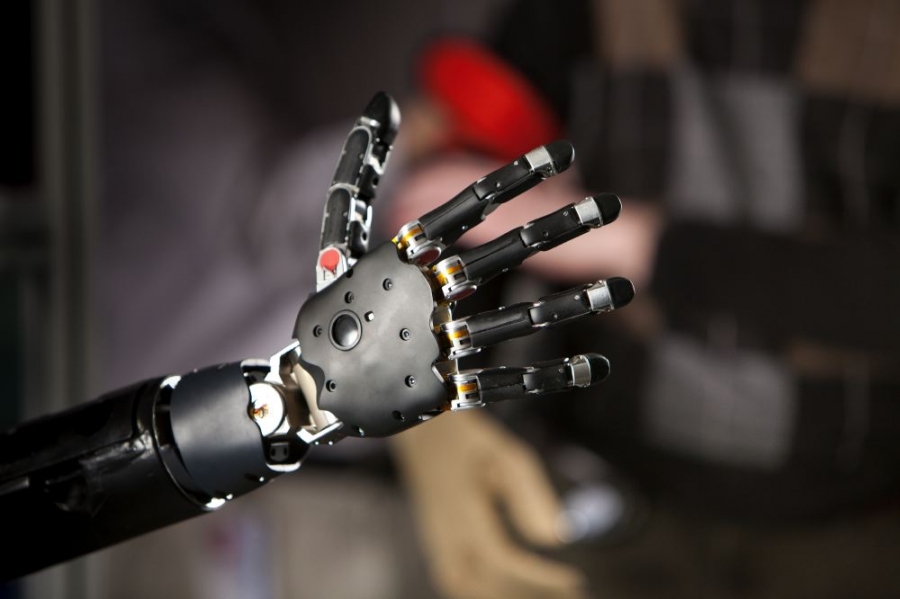
Other different forms of bionic arms are also being tried elsewhere. Of particular interest is a variant of bionic arm, where complex multiple movements, would be possible, only with mental thought or mental commands. This kind of artificial arm controlled by the brain has been successfully tested by Rehabilitation Institute of Chicago on a woman with left arm amputation at the shoulder level. Thanks to this bionic arm, she can now pull on a drawer by thinking – ‘grab drawer pull’. Needless to say, trying different methodology to make a bionic arm function, will create a future with endless possibilities.
For those with lower limb amputations, the artificial leg has helped many to get their life back on track. Compared to the wooden prosthesis of the olden days, the lower limb prosthetics of the 21st century are a state of art creation. They are mainly of two varieties, depending on anatomical length.
The Transtibial variety – serves the people who may have an amputation transecting the tibia, the prosthesis, in this case, is known as below the knee prosthetic leg. The transfemoral variety is useful for people having an amputation transecting the femoral bone and prosthesis is also known as above knee prosthesis. Dislocations at the level of Hip, knee,and ankle are less prevalent, but presents much more challenge, as far as ideal support systems are concerned.
Lower limb prosthesis has also evolved much over time, with many different types in common use. The most popular of these are certainly bionic leg for amputee and prosthetic enhancements for racing or athletic purposes. Prosthetic limbs in sports have become extremely popular thanks to South African Paralympic runner Oscar Pistorius’s special running blades.
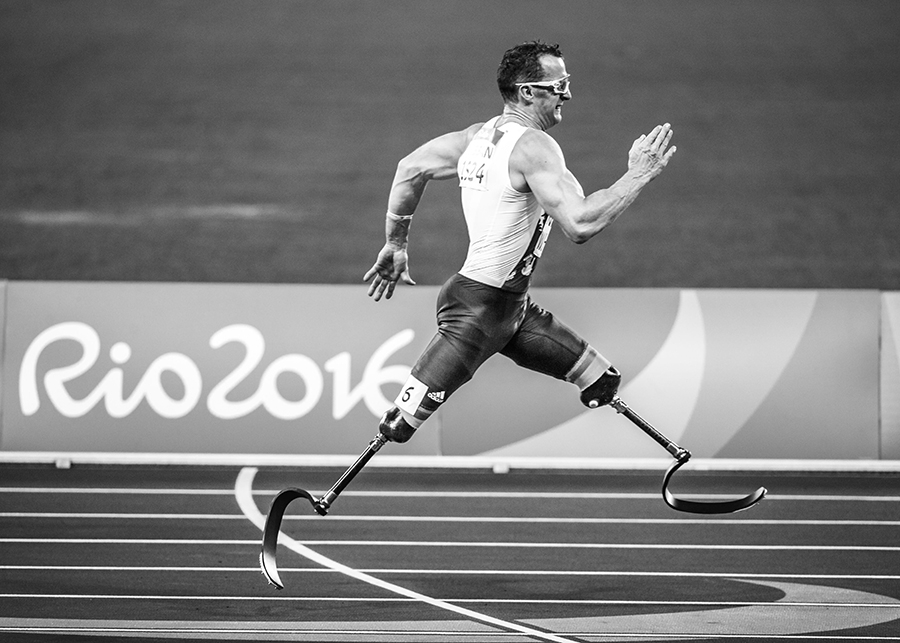
Prosthetic running blades are a kind of lower leg prosthesis made up of special carbon fiber reinforced polymer and enables wearers to run and jump very efficiently. The basic mechanism behind this type of carbon fiber prosthetic leg involves storing kinetic energy from the user’s movement as potential energy, like a spring, which then enables the wearer to run and jump effectively. Oscar Pistorius was born with a congenital defect of lower limbs, for which his leg was amputated, halfway between knee and ankle (so he could wear prosthesis) when he was 11 months old. The prosthetic foot replacement, used by Oscar Pistorius since 2004 and credited by many for his success, is made byan Icelandic company – Ossur.
Another variety of lower limb prosthesis, which has certainly been in a lot of focus is the Bionic Leg for amputees, described by Hugh Herr in his TED Talks. Herr’s own loss of both legs in a climbing accident, many decades back has enabled him to have deep personal insight into the problem of lower limb loss. Later as a head of MIT Media Lab’s Biomechatronic group, he has used, his personal experiencein building the next generation of bionic limbs.
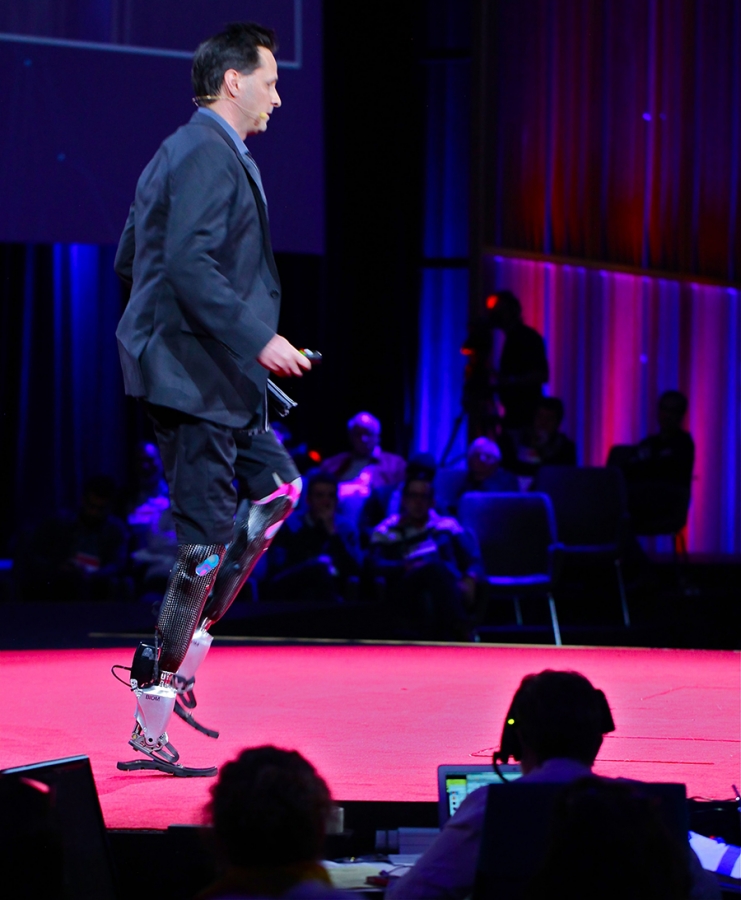
The bionic prosthetics created by Professor Hugh Herr, mimic the functions of real limbs very closely and has ushered a new bionic age. The bionic legs communicate with the nervous system via electrodes present on the residual leg stump, that measure the electrical pulse of the muscles, which is then communicated to the bionic limb. So, thoughts and attempts to move the phantom limb is translated into real movement of the bionic limb. The bionic legs enable a person to stand, walk, run, bounce, dance and even climb mountains. Indeed, thanks to Professor’s Herr’s efforts, lower limbs disability is no longer a handicap.
Spinal implant cure for paralysis of the legs and lower body, typically caused due to spinal injury is one of the latest forms of treatments, that has come as a boon to a people with paralytic disabilities. Before we delve deeper into how this miracle treatment of 2018 works, a brief understanding of pathological changes responsible for creating the effects of paralysis would be useful.
Whenever a person sustains a back injury, there is a chance of injury to middle or lower regions of the spinal cord. With the nerve injury caused due to trauma, the nerve pathways and transmission are disrupted badly and the function of the organs below the level of injury is lost. So, the basic pathology entails loss of transmission of messages from the brain to the distant organs, due to the traumatic disruption of nerves produced due to spinal cord injury.A spinal implant for paralysis attempts to reverse some of the effects of spinal cord injury, so people can walk again.
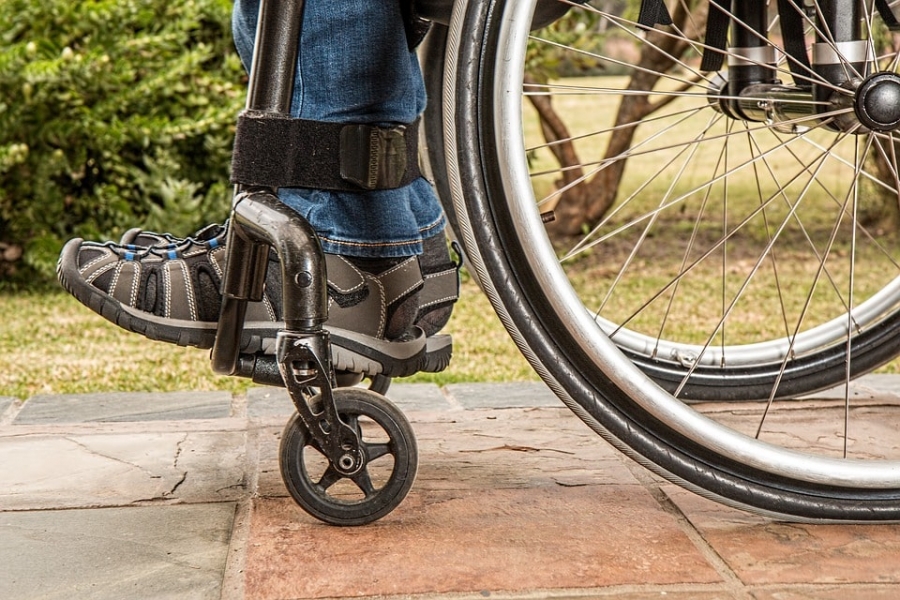
Using electrical stimulation to reverse the effect of spinal cord injuries, is not exactly new. Even in the most severe cases of spinal cord injuries, some healthy nerves may still remain (though others may be permanently damaged). Artificial electrical activity helps in activating the healthy nerves, that transfer information from the brain to the limbs. In recent times, this technique has shown remarkable progress, as many study reports in 2018 have demonstrated.
In a study of a spinal implant for paraplegic, undertaken in Mayo Clinic inthe USA, a person with total paralysis of lower part of the body, was able to walk a hundredmeters (with the support of a walker), by the help of a spinal implant. This implant known as EES (epidural electrical stimulator) uses a pulse generator put under the skin, to send signals to electrodes applied to the dura mater (outermost membrane of the spinal cord) way below the level of injury. Living with this device is somewhat similar to living with a pacemaker for the heart.
Similar findings were also obtained by researchers from EPFL in Switzerland. 3 patients with partial spinal cord damage, found some of their sensation & movements restored, after 5 months of spinal stimulation. The study was remarkable in the sense that in this case, in contrast to the one discussed previously, the benefits were observed even when the implants were turned off. The device was much more intuitive, delivering stimulation to the relevant part of the spinal cord, at the precise time when it was required.

These technological advancements of implanted devices have contributed to unprecedented results as far as treatment of spinal cord injuries is concerned. However, all these studies of applying spinal cord implant for paralysis treatment, have been done in a controlled environment.Skeptics believe that these studies may not work for those who have severe spinal cord injuries. Certainly, if no healthy nerves are preserved distally, this procedure may not work unless other supportive procedures for repairing the injuries are carried out.
So, there is a good possibility, that there is still a long way to go before wheelchairs and walkers become a thing of the past. Bigger clinical studies, incorporating more patients, need to be done before advising spinal implant for paraplegics in the general population.
According to the World Health Organization’s estimates, about 285 million people in the world suffer from problems of vision; 39 million are blind and another 246 million have moderate to severe visual impairment. Doctors and scientists all over the world are trying different ways to alleviate their suffering, bionic eye technology is one of them.
Before we go on to discuss the bionic eye of the future, which can help the blind to see once again, a brief understanding ofthe visual pathway & cause of blindness would be certainly helpful. Vision begins, when light enters the eye. The cornea and lens help in focussing this light into the retina – the sensory membrane, situated in the posterior part of the eye. Photoreceptor cells present in the retina, take the light focussed by lens and cornea and convert it into chemical and nervous signals, that are transported to visual centers present in the brain, by the optic nerve.
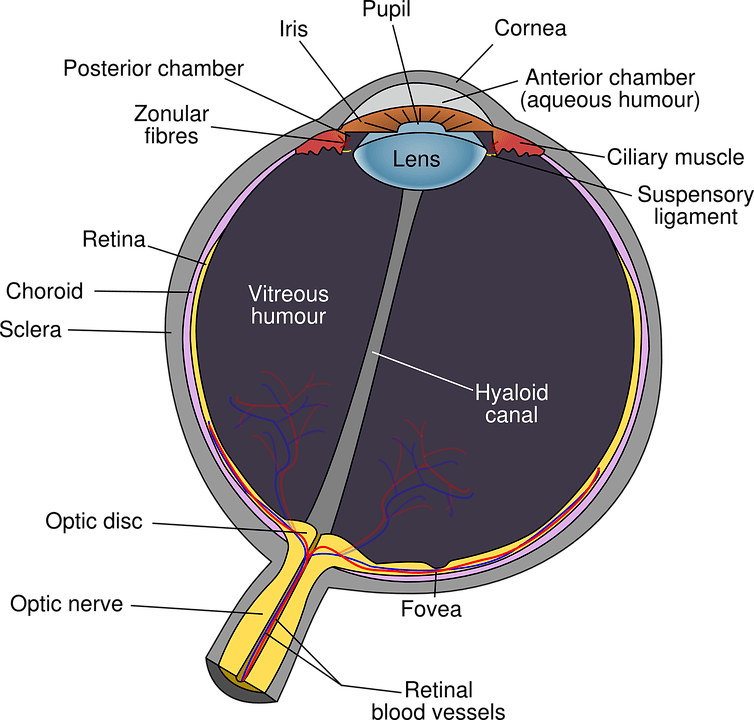
Visual difficulty can be produced, whenever any part of the above-mentioned pathway does not work properly. In some cases, the fault lies with cornea or lens and in some cases, the retina or the pathway up to the brain is to be blamed. So, it is obvious that there is no single cause of blindness & for the same reason, there is no standard single cure, which can be used asa remedy to all problems. Corneal transplant surgery & Cataract surgery are used, when the cornea and lens need to be replaced. The currently available bionic eye is directed at the pathology of the retina.
The bionic eye for the blind is built on the belief that an artificial eye should not just replace the physical structure and cosmetic appearance of a normal eye, which a prosthetic eye or a glass eye does, but also achieve functional vision goals. The currently available bionic eye system – Argus II Retinal Prosthetic System (one of the popular commercially available version) helps in restoring some visual perception in people suffering from Macular Degeneration & Retinitis Pigmentosa – leading causes of blindness due to retinal pathology.
Argus II Retinal Prosthesis System helps in detection of light, in conditions of Macular degeneration & Retinitis Pigmentosa, where photoreceptors – the cells at the back of the retina, that detects light patterns and then pass it to the brain enabling normal vision, are impaired. The Argus II Retinal Prosthesis system tries to take the place of these photoreceptors.
This bionic vision system consists of 5 main parts – Digital camera inbuilt in a pair of glasses, which captures images and sends it to a video processing microchip built into a hand-held unit. This microchip changes images into electrical pulses & sends them to a radio transmitter in the glasses. This radio transmitter further transmits pulses to a radio receiver implanted above the ear or under the eye. The radio receiver relays the pulses to the retinal implant by very thin implanted wire. The Retinal implant has 60 electrodes, on a chip measuring 1 mm by 1 mm. The whole system runs on a battery pack that is housed with the video processing unit.
In summary, the images captured by the camera is converted into signals that are transmitted to the retinal implant. The chip’s electrodes stimulate the retinal cells & thus messages are sent to the optic nerve, finally to be processed by the brain.
However, the bionic eye system available at present does have certain limitations. People using this can make out light, movements,and shapes but the vision obtained is not exactly similar to having normal vision. The main reason for this is that –current bionic eyes have implants containing only 60 electrodes. Normal vision by a normal eye is produced, by a million electrodes working together.

In spite of the above-mentioned limitations, bionic eyes have remarkably improved living standards of many people & its benefits can’t be ignored. It has enabled people to read large prints books and cross the streets. Unfortunately, with the cost of around $150,000, it is out of reach for many people. Hopefully, the bionic eye of the future will be more affordable and provide a sharper and better quality of vision, which would be possible by adding more electrodes to the bionic eye technology models being developed.
Using Brain implants to reverse paralysis, is rather a new development, that has achieved some success only in laboratory settings, till now. As discussed before, living with limbs that does not function properly is a really challenging problem, and neuroscientists are researching to develop technology to help the affected people, and restoring as much function as possible. Brain implant for paralysis treatment is one such option.
A global nonprofit research and development organization – Battelle, located in Columbus, Ohio, USA has come up with a new experimental device, called NeuroLife, that aims to treat paralysis by creating an artificial link (neural bypass) between the brain and the body.
The technology used for this experimental device is rather complex and involves, implanting a tiny chip in the primary motor cortex of the brain (the area of the brain responsible for the origin of signals of motor function). As the patient thinks about a particular movement, the chip records the brain activity. A machine learning computer algorithm then decodes the brain activity generated by the thoughts & send signals to a wearable sleeve with 260 electrodes, that spur the muscles to move & the intended action is performed.
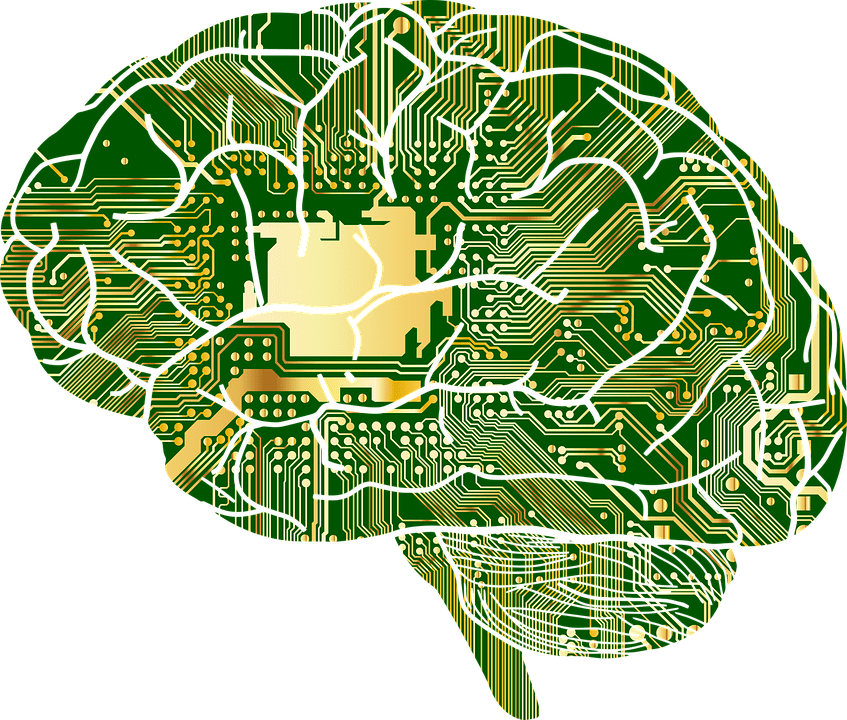
The first participant in the study was a male in his 20s, who suffered from the loss of function of all of his 4 limbs, after a driving accident. With the help of NeuroLife, he has been able to execute continuous cortical control of 6 different wrist & hand motions and with constant usage, he was also able to complete functional tasks relevant to daily living.
The device is yet in its early stage and would need further trials and modifications before it can be used in large scale by the public. The device’s hardware is being modified to make it more wearable and portable, and the software is also being upgraded, to ensure that algorithms can be run on phones and small tablets. It is very likely that it would take considerable time to develop a model, which patient can take home and use it for restoring full functionality.
The above discussion has clearly proven that we are living in an era, where scientific knowledge is increasing by leaps and bounds. Many of these are directed towards giving better standards of living for all humans, including the disabled. But is the scientific progress, enough on its own, to give a better and improved lifestyle for all humans across the world?
Oscar Pistorius, the famous South African Paralympic runner’s decision to participate in the non-disabled international sprinting competition, created serious controversy,andraised difficult questions like – Do prosthetic legs give the runneran advantage? Suddenly the use of the prosthetic limb in sports, became a contentious issue, proving even the best intentions can give rise to unfortunate unforeseen situations. This clearly proves that even new scientific inventions meant as blessings for mankind, are not free from unexpected legal and ethical ramifications, finding a solution to which may not exactly be easy.
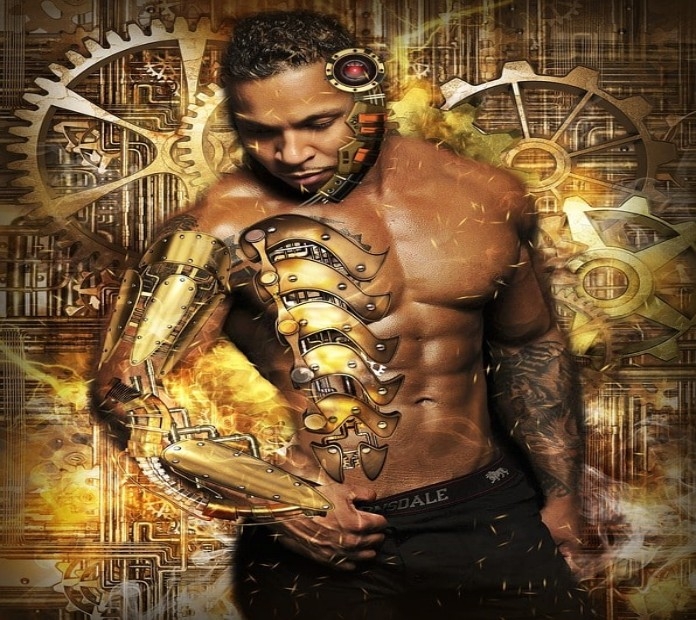
Finally, in spite of all talks of globalization in the 21st century, the division between the rich and the poor & difference between the developed world and developing nations, would come as a hindrance for equitable distribution of all modern-day blessings, which are born of science. In spite of all these challenges, the above mentioned new scientific developments are certainly a welcome change in the correct direction, which would change the life of many, if not all, people who desperately need them.
(Disclaimer - The author has no affiliations or involvementwith any organization or entity, with no financial interest, or non-financial interest in the subject matter or materials discussed in this manuscript. This article just reflects the information present in different journals & news reports. Only a select few techniques/products have been discussed.There are a few other equally good important developments & products, which may have been left out, due to lack of space. Reader’s discretion is advised.)